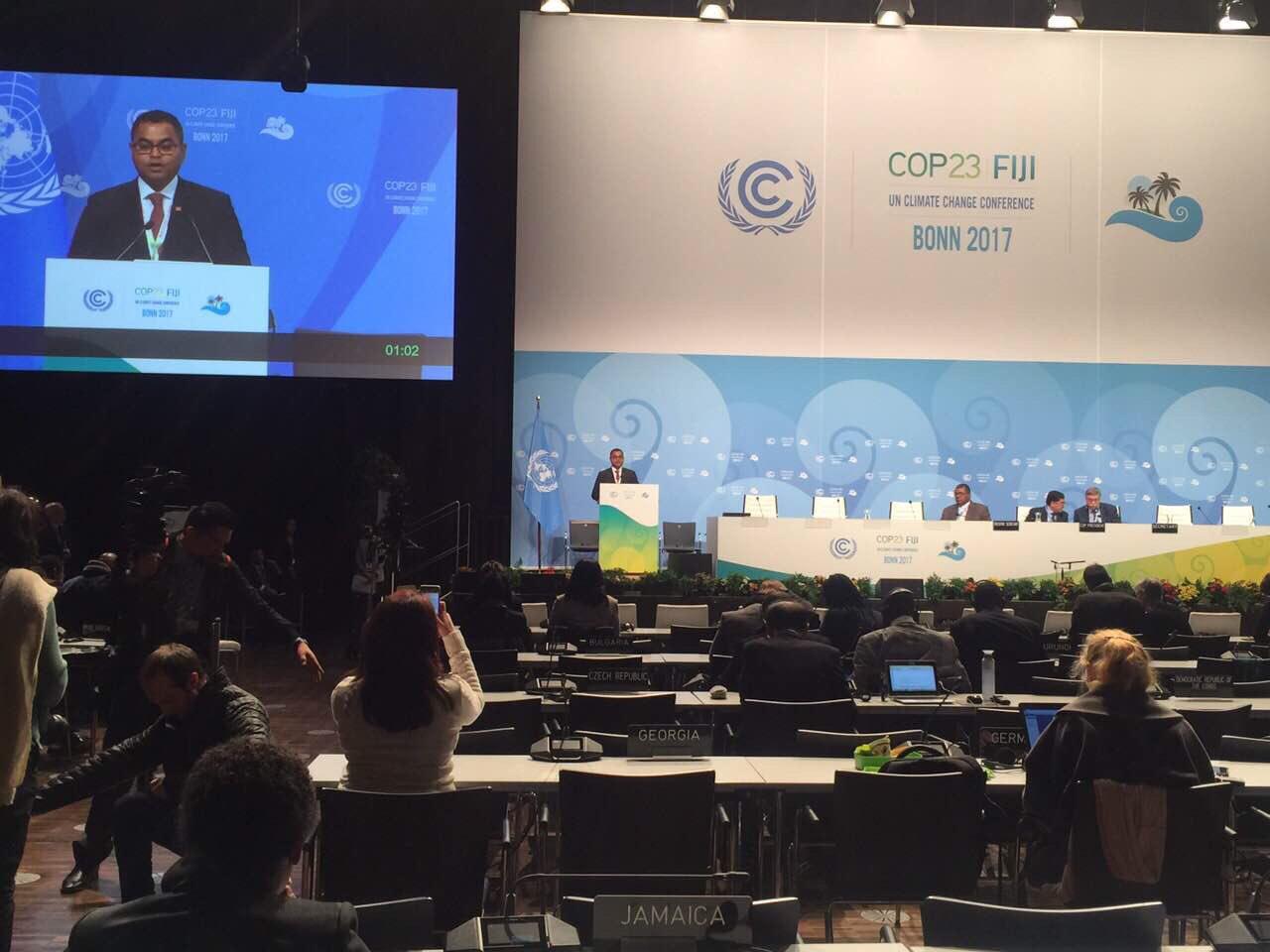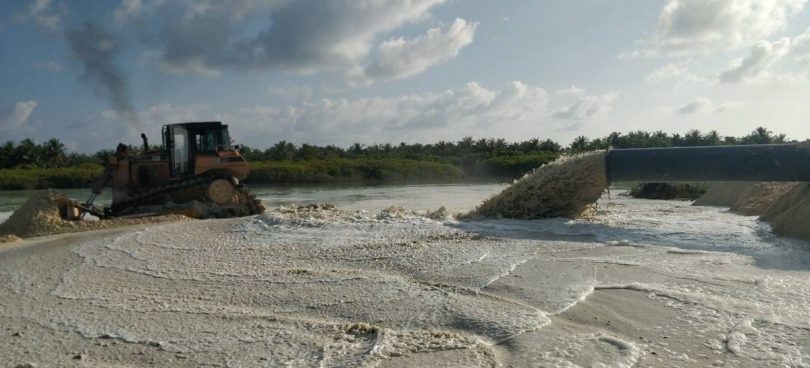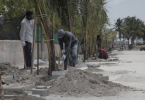It has been a busy winter for the Maldives Environment Minister Thoriq Ibrahim.
Last Wednesday he concluded the One Planet Summit, which marked two years since the Paris Agreement. In November he attended the COP23 Summit. The Maldives is a poster child internationally for its vulnerability to climate change, but its globetrotting and grandstanding has drawn criticism and mockery at home.
“The Maldives doesn’t have a rightful position on the international stage to vocalize about environmental issues. We’re environment destroyers,” says Adam Isham, who is part of the #SaveMaldives campaign raising awareness about the destruction of natural habitats in the country.
The NGO EcoCare is suing the Environment Ministry and the Environment Protection Agency (EPA) for destroying mangroves to build an airport in Kulhudhuffushi. The 2018 budget has caused alarm over its plans to reclaim more than 20 lagoons, and the government has talked about building more airports. Two new environment laws are awaiting approval because of power plays in parliament, meaning the Maldives still operates under the 1993 Environment Act.
The Maldives government is accused of hypocrisy: planning for the destruction of the environment while at the same time championing to save it.

“The Environment Ministry puts on a whole new mask at international platforms saying, ‘Oh, we’re sinking, look’, and then they come back to Maldives and promote this idea of development that’s unsustainable,” says Aisha Hussain Rasheed, a social activist. “They promote plastics, they promote concrete infrastructure like bridges and buildings.”
She says the biggest issue when talking about the environment is the lack of the EPA’s independence.
Late last year, the ruling PPM held a tea party to celebrate the destruction of the Meedhoo’s reef channel by blasting it with dynamite, after a decade-long discontinuation of the practice was overhauled with EPA approval.
The agency’s authority is in doubt after its powers to evaluate environmental impact assessments (EIAs) and authorise projects such as land reclamation were transferred to the Tourism Ministry.
Keylakunu, considered to be the country’s only ‘forest island’, is to be developed for tourism despite environmentalists urging for its conservation.
Isham believes a lack of cohesion between environmental bodies, and lack of participatory avenues for environmental issues has led to Keylakunu being opened for development.
“If the EPA was independent and all the mandates and functions were under the EPA that could have been prevented,” says Isham.

“The Maldives is portrayed as environmentally conscious on the international stage, but locally people don’t have enough knowledge to tackle these issues.” says Aisha, noting a lack of environmental awareness even among elected officials and government ministries. “The approach of environmentalism is top-down, and even the people with the technical know-how of environmental issues are silent about the destruction because they’re worried about their jobs.”
With deteriorating human rights in the Maldives, only a few dare raise concerns from the fragmented NGO sector. Campaigns to divest from fossil fuels, save the wave-break of Malé, or save the Kulhudhuffushi mangroves have fallen on deaf ears.
Grassroot efforts are also hindered by a lack of transparency in projects. Transparency Maldives reported “serious concerns of availability of accurate and up-to-date information on the list of projects and their progress”, stating a comprehensive list of climate projects is not available to the public. It also notes there are “unclear decision making processes in effect”.
The anti-graft NGO said grant sums of money are approved by the Economic and Youth Council, but that “attempts made to identify the role and mandate of the EYC was unsuccessful.”
Donors are also singled out for failing to hold the government to account.
“The donors being silent on this is a major concern. There’s so much climate funding coming into the Maldives, but with not much impact. Their silence is sending a powerful message that legitimizes what the government is doing,” says Aisha.
Transparency Maldives also recommended donors encourage reporting of climate finance projects to national monitoring agencies and remarked that “harbor and sewerage projects are increasingly viewed as contributing to climate resilience.”
“What the donors are doing now is fooneh fayah fenfurun,” says Aisha, citing an old Maldivian proverb that means pouring water into a bottomless container.
She believes the development of infrastructure is about winning electoral votes.
“There’s an election cycle every five years, and buildings and bridges are more tangible short-term than a 20 year plan of sustainability. It can push for votes if you can see progress in five years.”
“The government does not understand that the environment is not a battleground for politics,” says Isham. “What they’re doing is playing with natural ecosystems and destroying them, leaving people very vulnerable.”
The Maldives already experiences heavy flooding and extreme weather. A lack of responsibility and accountability from donors and the government on climate resilience increases the chance of people becoming climate refugees.
“Hold the Maldivian delegations accountable when they come to your summits. You can’t just give them an easy pass,” says Aisha.
Full details are available at the link below:







